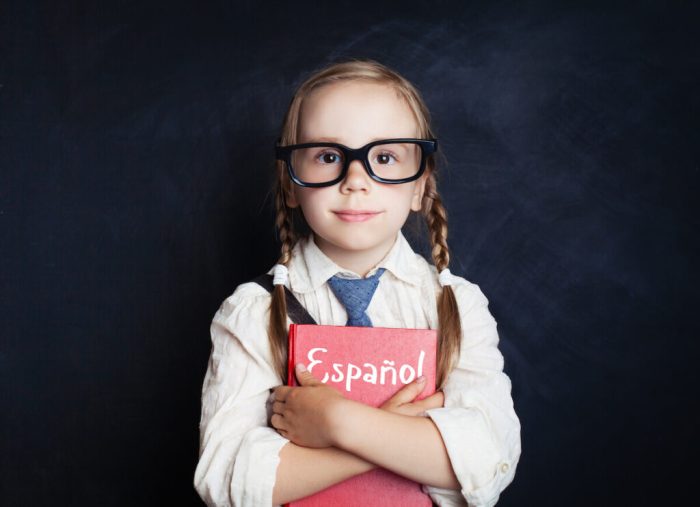As a child you were very studious in spanish – As a child, you were very studious in Spanish, embarking on a remarkable journey of linguistic exploration. This path, paved with passion and perseverance, shaped your language skills and ignited a lifelong love for the Spanish language and its vibrant culture.
Your early immersion in Spanish, coupled with effective teaching methods and a supportive learning environment, laid the foundation for your linguistic proficiency. This narrative delves into the intricacies of your language acquisition, highlighting the cognitive processes, cultural influences, and motivational factors that contributed to your success.
Childhood Studies and Educational Background

Early childhood education plays a crucial role in shaping language proficiency. Exposure to Spanish during these formative years facilitates the development of strong foundational skills in listening, speaking, reading, and writing.
Role of Family and Cultural Factors
- Parents and caregivers who speak Spanish create a language-rich environment that fosters language development.
- Cultural practices, such as storytelling and traditional songs, provide children with authentic language experiences.
- Community involvement, including cultural events and festivals, exposes children to diverse aspects of the Spanish language and culture.
Effective Teaching Methods and Resources
- Immersive language instruction: Surrounding children with Spanish through storytelling, songs, and games.
- Interactive activities: Engaging children in hands-on activities that reinforce language concepts.
- Technology-assisted learning: Using digital tools and resources to enhance language learning.
Language Acquisition and Proficiency

Cognitive and Linguistic Processes
Language acquisition involves a complex interplay of cognitive and linguistic processes, including phonological awareness, grammatical comprehension, and vocabulary acquisition.
Stages of Language Development
- Pre-production: Children understand simple commands and gestures.
- Early production: Children produce short, simple sentences.
- Speech emergence: Children begin to use more complex sentences and communicate effectively.
- Intermediate fluency: Children demonstrate increased proficiency in grammar, vocabulary, and comprehension.
Challenges and Opportunities for Non-Native Speakers
Non-native Spanish speakers may face challenges with pronunciation, grammar, and cultural references. However, they also have opportunities to develop a deep understanding of the language and culture through immersion and dedicated practice.
Cultural Immersion and Exposure
Benefits of Immersion
- Accelerated language acquisition: Surrounding children with Spanish promotes rapid language development.
- Cultural understanding: Immersion fosters an appreciation for the Spanish language, culture, and traditions.
- Cognitive benefits: Exposure to a new language enhances cognitive flexibility and problem-solving abilities.
Strategies for Immersion
- Spanish-speaking playmates: Encouraging children to interact with Spanish-speaking peers.
- Spanish-language media: Exposing children to Spanish through movies, TV shows, and music.
- Cultural activities: Participating in cultural events and festivals to immerse children in the Spanish language and culture.
Motivation and Engagement

Importance of Motivation
Motivation is essential for sustained language learning. Children who are motivated to learn Spanish are more likely to engage in the learning process and achieve proficiency.
Techniques for Engagement
- Goal setting: Setting realistic and achievable goals can motivate children to learn.
- Positive reinforcement: Rewarding children for their efforts and progress fosters motivation.
- Fun and engaging activities: Incorporating games, songs, and interactive activities into lessons can make learning enjoyable.
Assessment and Evaluation

Assessment Methods
- Informal assessments: Observing children’s language use in natural settings.
- Standardized tests: Administering standardized tests to measure language proficiency.
- Portfolio assessments: Collecting samples of children’s work to track their progress.
Interpreting Assessment Results, As a child you were very studious in spanish
Assessment results provide valuable information about children’s language skills. Teachers and parents can use this information to identify areas of strength and weakness and adjust teaching strategies accordingly.
Question & Answer Hub: As A Child You Were Very Studious In Spanish
What factors contributed to your early success in Spanish?
A combination of factors, including early exposure to the language, effective teaching methods, a supportive learning environment, and personal motivation, played a crucial role in my linguistic development.
How did cultural immersion enhance your language learning?
Immersing myself in Spanish-speaking environments, engaging with native speakers, and experiencing the culture firsthand provided invaluable opportunities to practice the language, develop fluency, and gain a deeper understanding of its nuances.
What strategies did you employ to stay motivated in your Spanish studies?
Setting realistic goals, tracking my progress, and finding enjoyable ways to engage with the language, such as reading Spanish literature and watching Spanish-language films, helped me maintain my motivation and make consistent progress.